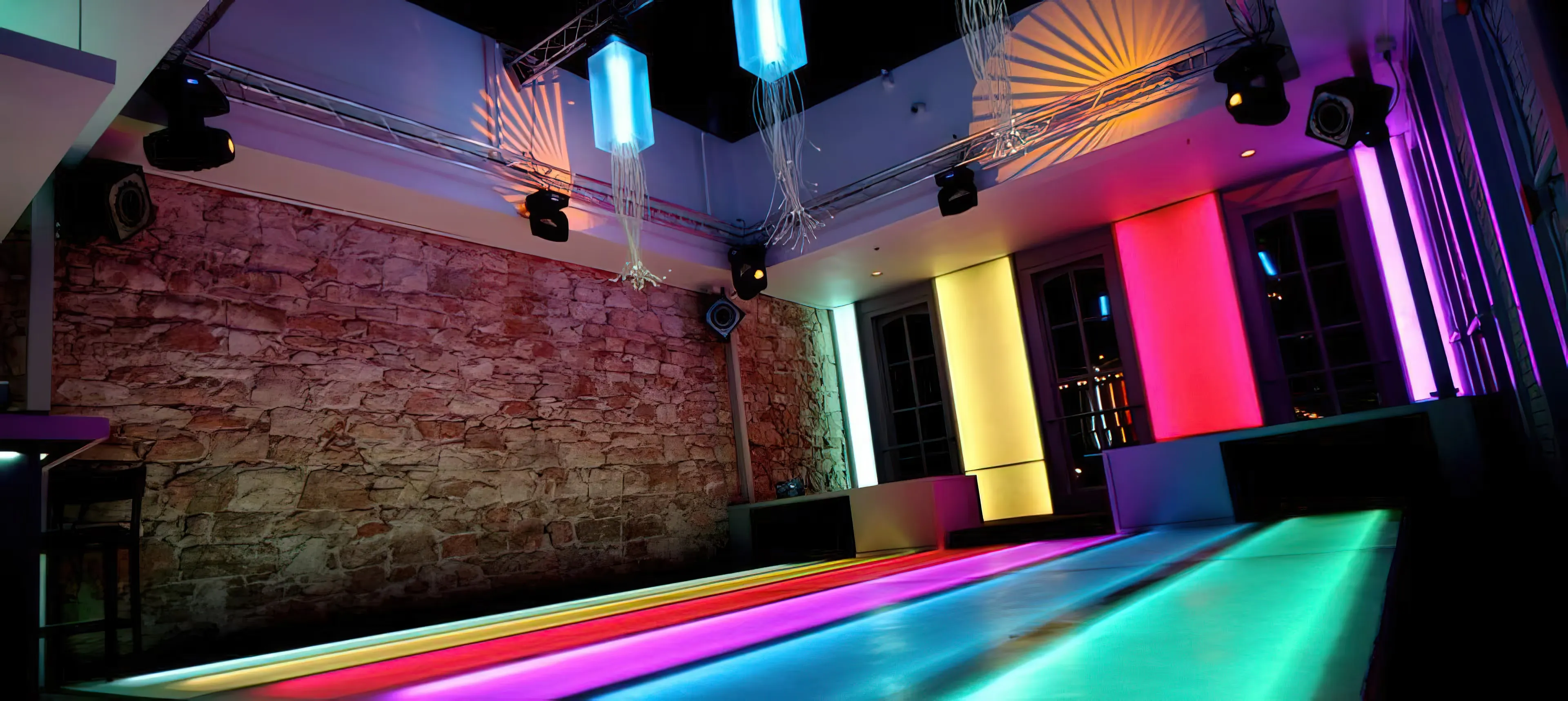
Here is part of my answer:
Having subs apart from each other will cause interference patterns. Because of energy loss over distance, the further the stacks are apart, the less noticeable the nulls will be, but there will be nulls. The nulls happen wherever you are 1.5X further from one stack than the other. In other words, in a straight line, you would have a peak half way between the two stacks and a null half way between that center point and each stack.


If you’re standing 20′ directly in front of one stack and the other stack is 30′ away on a diagonal, you will be in a null. In certain places, delaying of the arrays can be used to manipulate where the hot spots and nulls fall in the room. It can be useful to place nulls at exterior doorways or in DJ booths for instance. Some of the nulling may also be affected by wall and ceiling reflections.* (see note below)
Whenever you have multiple subwoofer locations, there will places in the room where the energy from the farther array will be nulling a good portion of the energy from the nearer array. In short, to get the most even coverage its most often better to drop one big rock in the pond and make one big wave than it is to drop more small ones around the pond making more random ripples.
Putting all the bass on one end of a room will give you multiple advantages.

The first is that you’ll create one big wave rather than a bunch of smaller ones interfering with each other.
The second is coupling efficiency. You get effectively twice as much output from two speakers coupled together than you do from two that are spaced apart.
Third, you get improved directional control of lower and lower frequencies the larger the array of cabinets is. This effectively increases the system’s low frequency efficiency in front of the array while also reducing the energy being lost off-axis, where you might not want it to go.
Fourth, you also create a condition of 1/4 space loading for the cabinets, extending their low frequency response. If the room isn’t too big, this effect can create a condition where the room dimensions are smaller than the wavelengths and you get rising response (room gain) at the extremely low end of the spectrum.
Finally, you increase the near-field listening distance with a large array, which means you lose less energy over the initial distance from the array with a bigger array. This all means that the sound level on the dance floor would be quite consistent even if the subs were all on one end. (Provided they aren’t all facing at a wall on the opposite edge of the dance floor.) (*see note below.)
I imagine that by now you will have guessed that I would recommend putting all your sub boxes at one end of the dance floor. Under most circumstances, setting up the subs that way and using the right processor settings should give you massive extended low frequency response throughout the room. Adding appropriately capable top boxes with the right alignments will complete the high impact punch and deliver the best possible coverage for the space.
* Notes on reflections:
A null will be created half-way between a subwoofer and any solid, bass-reflecting surface. The reflected wave returning from the wall (or floor or ceiling) will be phase reversed from the direct signal at the mid-point between the subwoofer and the reflecting surface so, in short, put subwoofers against a wall rather than facing a wall.
If you must put subs in the ceiling, make sure they are well over 12′ up, preferably minimum 16′ up if your audience will be directly below them. That way the nulling occurs above their heads.

In a low-ceiling space with a hard roof such as a basement, if subs are on the floor, the ceiling reflection may reduce the apparent bass level directly in front of the subwoofers. In such a case it’s better to stack the subs vertically than lay them on the floor.
For specific information about your space, contact me through BASSBOSS.com.





